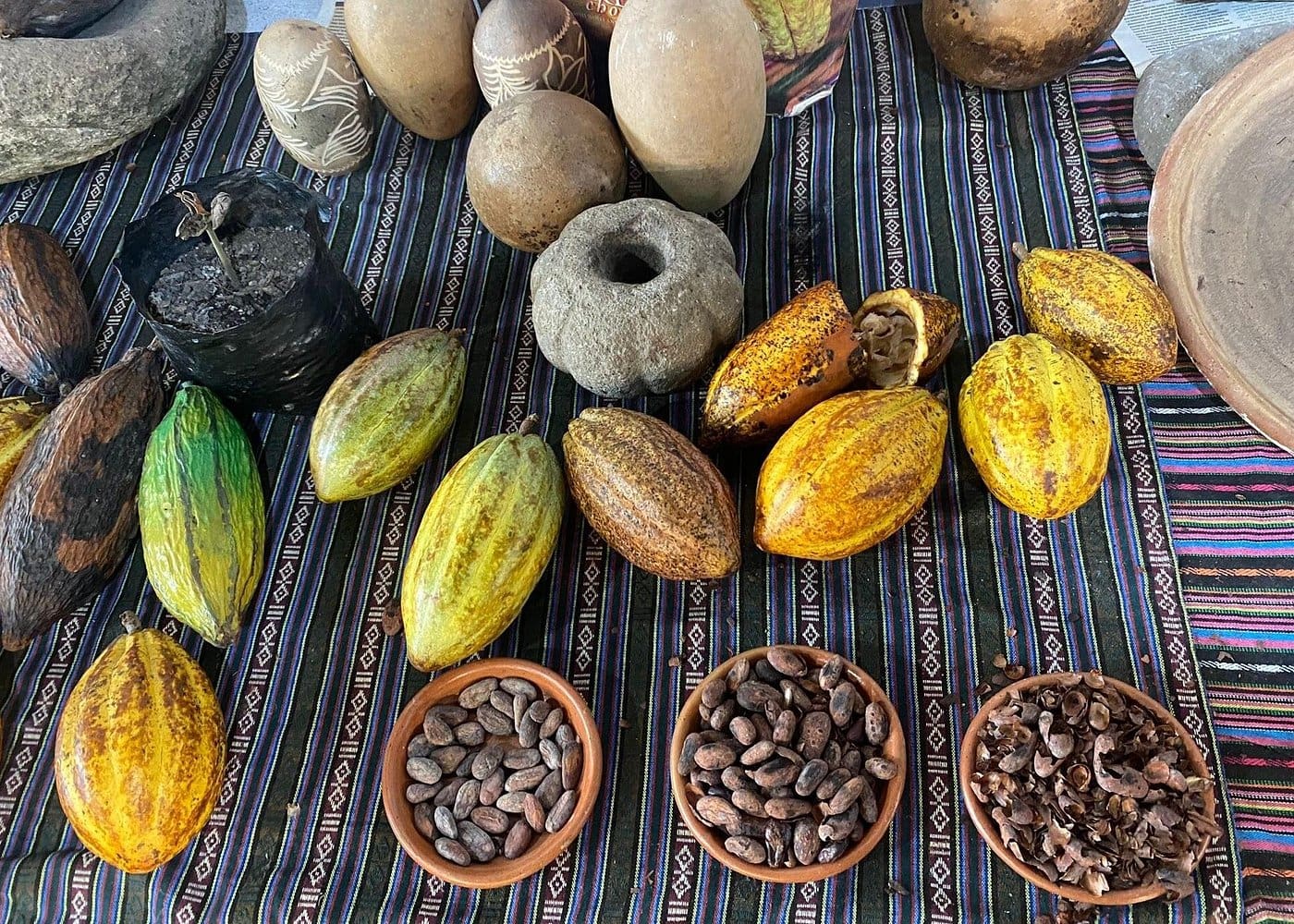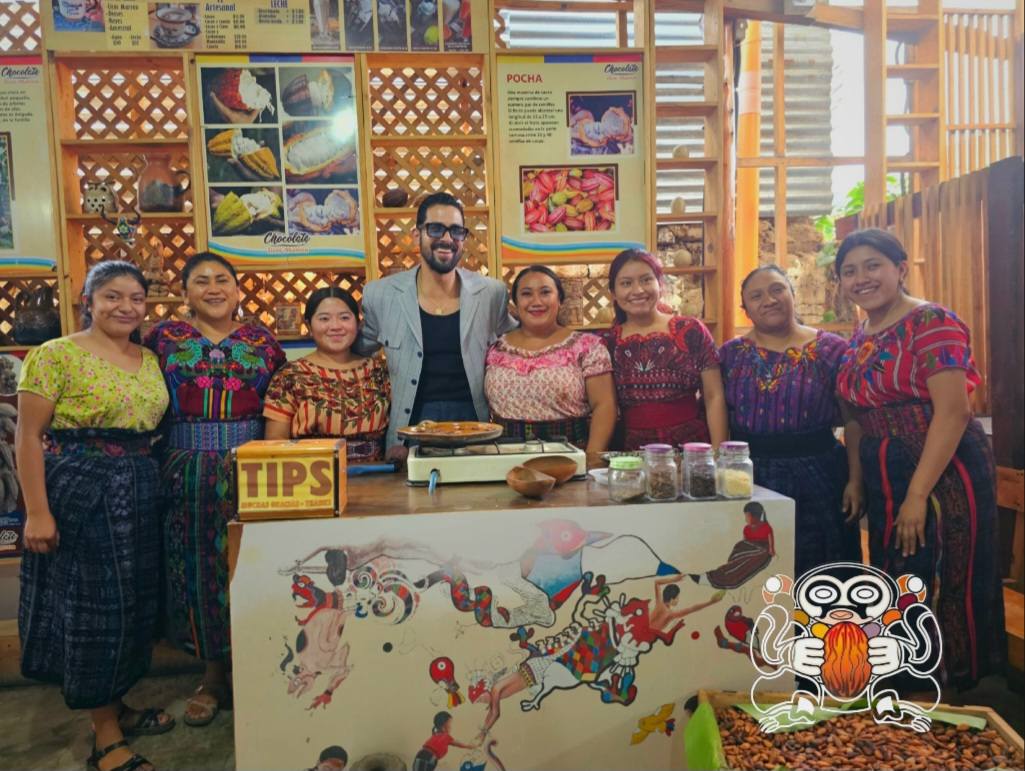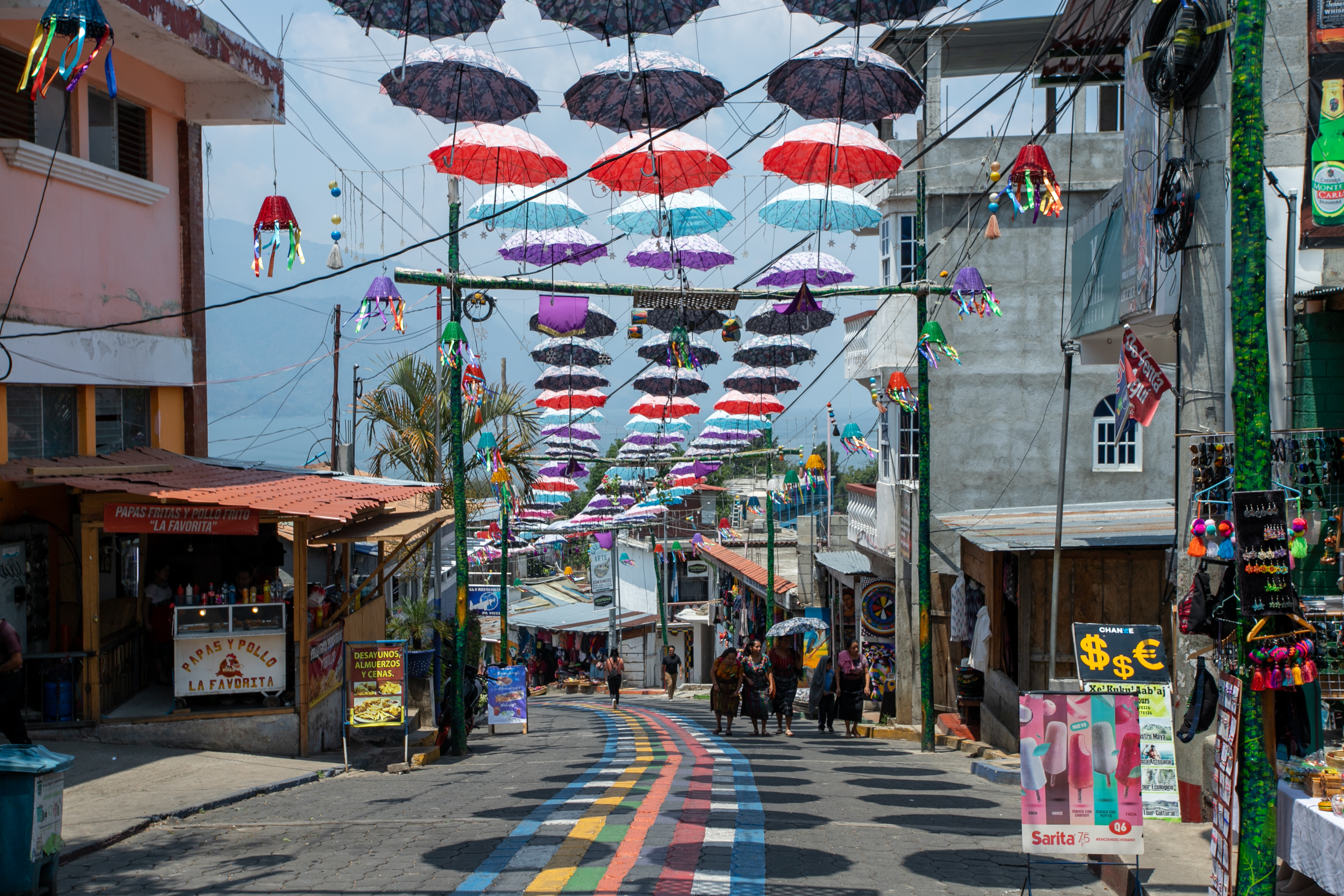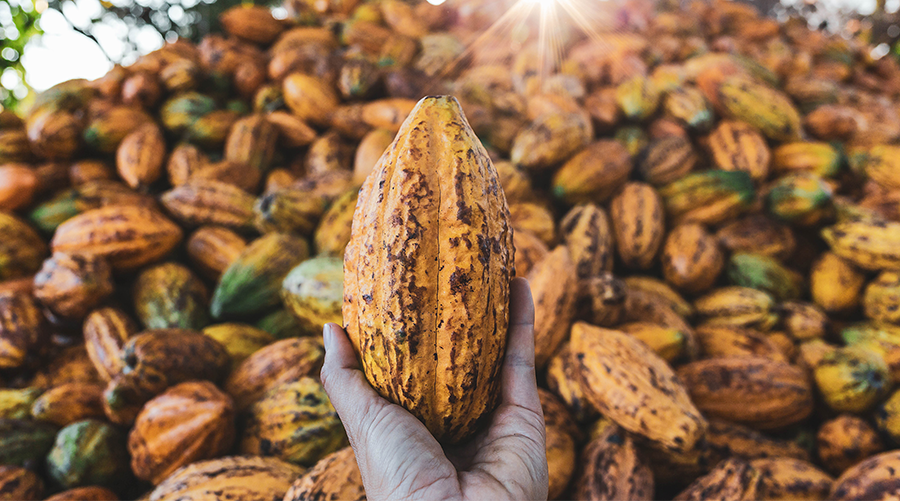Theraputic Massage in Lake Atitlan Resort
Pamper yourself with a theraputic massage at Los Elementos Day Spa. Enjoy a massage with th...
In the U.S., most people grow up with chocolate as a treat that comes neatly wrapped from a supermarket shelf. But here in Guatemala, cacao and chocolate are something else entirely—they’re ancestral, artisanal, and deeply woven into our daily lives and landscapes.
Guatemala’s volcanic soil, temperate climate, and lush tropical forests make it a prime region for growing cacao. This small country plays a big role in the global chocolate industry—but more importantly, it nourishes us at home. Cacao farming sustains communities, strengthens cultural identity, and helps restore the land.
I’m Lee Beal, founder of Kayak Guatemala. After living at Lake Atitlán for over 20 years, I’ve seen firsthand how cacao has shaped local lives, just as it shaped the ancient Mayan world.
In this blog, we’ll explore the deep roots of cacao in Mayan culture, learn how it’s transformed from bean to chocolate bar, and share the best ways to experience a chocolate tour around Lake Atitlán.

Before it was dessert, it was divine.
The ancient Maya believed cacao was a sacred gift from the gods. Known as the “exquisite beverage of the gods,” cacao was consumed during rituals, celebrations, and royal ceremonies. It was so valuable it served as currency—used to pay taxes, trade goods, and even settle disputes.
The cacao tree itself was revered. You’ll still find it growing here in the highlands around Lake Atitlán, where descendants of the Maya continue to honor their traditions through cultivation and ceremony.
Long before milk chocolate bars filled candy aisles, the Maya drank cacao unsweetened, often mixed with chiles, honey, or maize. It was consumed for vitality, connection, and spiritual clarity.
Today, you can still experience cacao in its most authentic form—whether you’re sipping a rich drink during a ceremony or learning to make chocolate from scratch on a family-run farm.
Watching a cacao bean become a chocolate bar is like watching a slow alchemy—it’s transformative, sensual, and surprisingly hands-on.
Turning cacao beans into chocolate is a thoughtful process rooted in tradition. It starts with harvesting ripe pods and extracting the beans, which are then fermented for several days to develop flavor. After sun-drying for about a week, the beans are roasted and peeled to reveal the cacao nibs. These nibs are ground into a warm paste called cacao liquor, containing both cocoa solids and cocoa butter. Depending on the recipe, sugar, milk, or spices are added before the mixture is tempered and molded into bars. From tree to treat, each step honors the cacao’s rich origin.

Different blends produce different results:
Every bar of chocolate you unwrap starts with a farmer, a tree, and a story.
Beyond the fruit it produces, Cacao in Guatemala is connected with a deeper social movement.
Following decades of coffee monoculture, many farmers around Lake Atitlán are returning to cacao. It offers a more stable income, requires fewer chemical inputs, and can be grown under a forest canopy, promoting biodiversity and preventing erosion.
Most cacao in this region is grown in agroforestry systems, where it coexists with banana, guava, allspice, and native trees. These mixed systems help protect watersheds, improve soil quality, and create havens for birds and pollinators.
Even more importantly, cacao farming helps families thrive. Income from cacao supports education, healthcare, and access to markets. For many smallholder farmers, it’s a path toward both prosperity and cultural preservation.
And by choosing to participate in ethical chocolate tours or buy directly from local producers, you become part of this cycle of regeneration and resilience.
At Kayak Guatemala, we’ve spent years connecting with cacao farmers, chocolatiers, and cultural leaders around the lake. We now offer a range of chocolate and cacao tours—each one rooted in authenticity and hands-on learning.
Facebook Join Ana Navichoc and her nephew Edsha for a 3-hour workshop that’s part cooking class, part cultural exchange. You’ll roast cacao beans over a fire, grind them with ancient stone tools, and mix your paste with local ingredients like cane sugar, herbs, and fruit. It’s a rare window into Maya traditions—and a truly delicious way to spend an afternoon.

Website Diego learned the art of chocolate-making from his grandmother. Today, his soft chocolate rolls are a hit among visitors who’ve never tasted chocolate this fresh, pure, or flavorful. No lecithin, no preservatives—just cacao, tradition, and care.
Website Perfect for those who want a broader historical overview, this 2-hour experience guides you through Maya cacao rituals, colonial history, and industrial chocolate production. You’ll make your own chocolates, customize them with toppings, and leave with a sweet souvenir.
Each of these chocolate and cacao experiences offers a meaningful glimpse into the heart of Guatemalan culture—from ancient techniques to modern interpretations. But if you’re looking to dive even deeper, there’s no better place to start than the village where many of these traditions come to life every day: San Juan La Laguna.
Whether you’re here for a weekend or a month, our San Juan Village Tour is one of the most enriching ways to spend a day around Lake Atitlán.
Why? Because it’s not just a chocolate tour—it’s a cultural immersion, designed to connect you with the people, stories, and landscapes that make this region so special.
We’ll guide you through the colorful streets of San Juan La Laguna, a village known for its vibrant murals, traditional crafts, and deep respect for Maya heritage. At each stop, you’ll meet local artists, midwives, and chocolate makers who are carrying forward centuries-old knowledge.
Tour highlights:
This isn’t just a tour. It’s a storybook day—woven with connection, flavor, and color.
Book your San Juan experience here

Want to design your own day? We’ve got you covered.
At Kayak Guatemala, we build custom cacao and chocolate experiences tailored to your interests—whether that’s farming, food, ceremony, or cultural storytelling.
Just email us at booking@kayakguatemala.com and let us know what you're dreaming of. We’ll take care of the logistics and connect you with the most inspiring local partners.
Cacao is just the beginning.
We offer adventure tours across the Lake Atitlán region, from kayaking and paddleboarding to rock climbing, hiking, mountain biking, and even fire ceremony and cooking classes. Our tours are designed for travelers who crave connection, authenticity, and a bit of adventure.
👉 Explore all our experiences here
Whether you’re here for the chocolate or the culture, we’d love to help you experience the very best of Lake Atitlán.
See you on the lake, Lee Beal Owner, Kayak Guatemala booking@kayakguatemala.com
